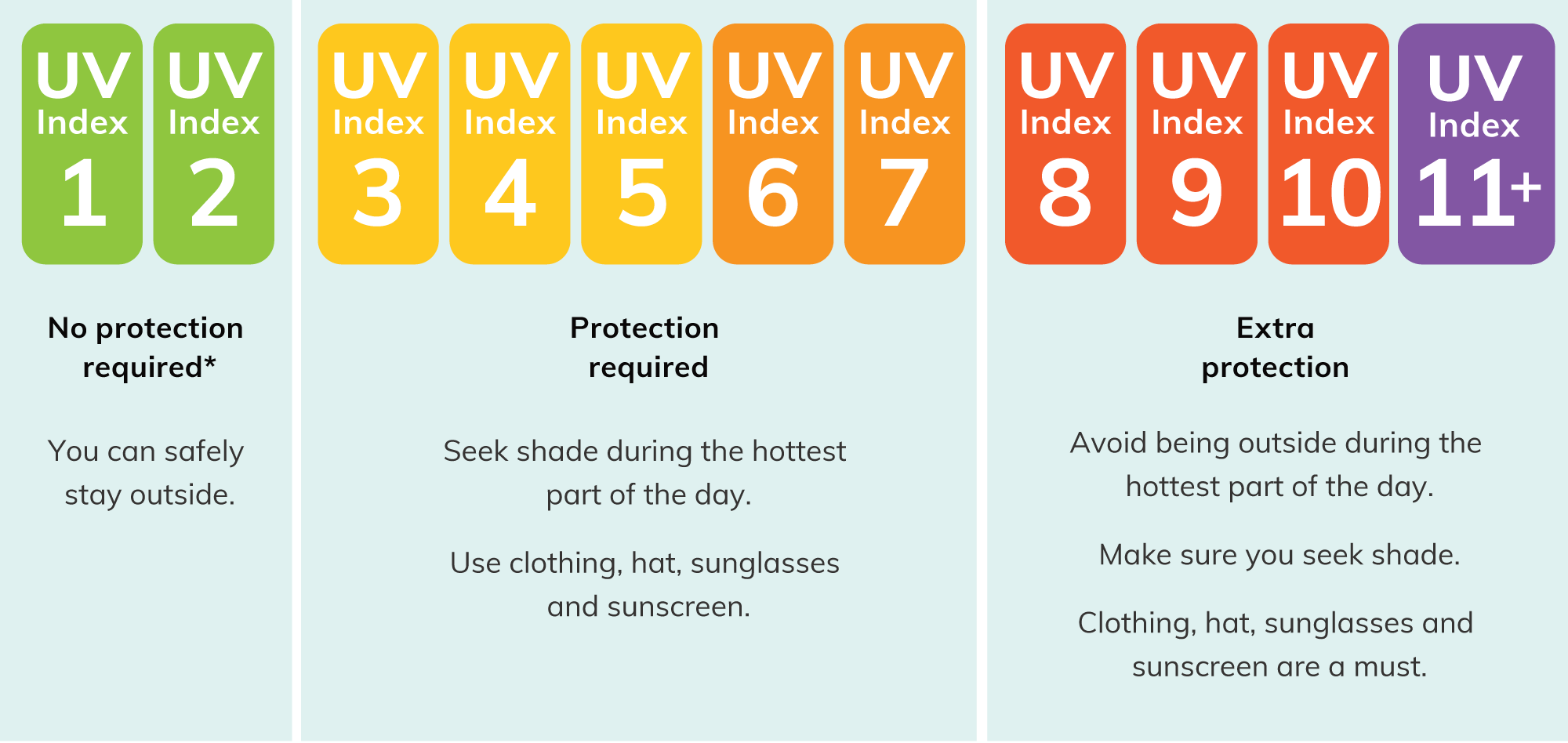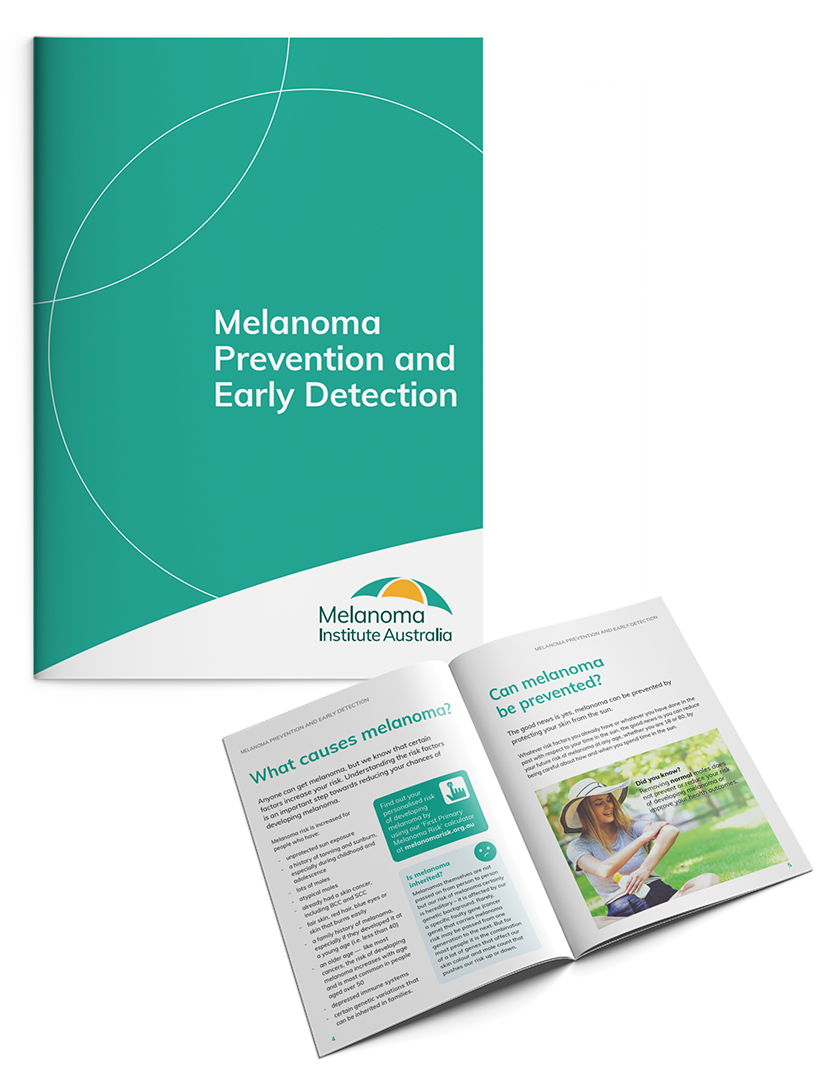Overexposure to ultraviolet (UV) light from the sun causes 95% of melanomas. The best way to prevent melanoma is to protect your skin from UV damage by following the 5 Sun Safe Rules:
Seek shade
Wear sun-protective clothing that covers your back, shoulders, arms and legs.
Wear a broad-brimmed hat. A brim protects your ears and neck more than a cap.
Wear wrap-around sunglasses. Check the label to ensure they meet the Australian standard (Category 2, 3 or 4).
Apply a broad-spectrum sunscreen with an SPF of at least 50+ every 2 hours and after swimming or exercise.
Sunscreen
Using SPF 50+ sunscreen is one of the 5 Sun Safe Rules to protect your skin and minimise your risk of skin cancer including melanoma. In Australia, all sunscreens are regulated by the Therapeutic Goods Administration. The best sunscreen is the one you actually apply!! It’s a personal choice, so find a sunscreen that you like to use.
It is important to:
- Use the highest possible SPF sunscreen (currently SPF50+ in Australia) with broad spectrum UVA and UVB protection. SPF is the ‘Sun Protection Factor’ against UVB which causes most damage. For eg, SPF 50 will provide 50 times the amount of time without sun damage, compared to not using sunscreen.
- Apply enough sunscreen – most Australians don’t. Slapping it on before you head out for the day simply is not enough. Ensure that any skin that will be exposed to the sun is covered in sunscreen. A good guide is the ‘7 teaspoon’ rule –one teaspoon for each limb, one teaspoon each for your front and back of your torso, and half a teaspoon each for your face and neck.
- Re-apply regularly – about every 2 hours, or more frequently if swimming or exercising.
Understanding UV
Light from the sun contains UV radiation which can damage your skin. It’s important to remember that UV can’t be seen or felt, and cloud cover won’t necessarily reduce UV radiation levels. The UV index can be high even on cool and overcast days.
The UV index is a tool you can use to know when to protect yourself from UV radiation. When the UV index is 3 and above, sun protection is always needed. If you have very fair skin and will be in the sun for long periods (more than an hour), you may need protection even if the UV index is below 3.
For smartphone users, the Cancer Council’s free SunSmart app is a great way to check the UV Index.

*Very fair skinned people may still need protection if in the sun for more than an hour.
We need to talk about tanning
We are often asked “Is there a safe way to tan?”
The answer is NO. A tan is actually your skin sending an SOS.
Most people who grew up in Australia have the perception that a tan is healthy. A tan is seen as aspirational; a sign of beauty, health and success. Advertising and our social feeds are flooded with images of tanned bodies, soaking up the sun in exotic locations around the world.
But science tells us otherwise. A tan is actually skin cells in trauma. It is the result of sun-damaged cells producing melanin in an attempt to protect themselves from further UV damage. It is your body’s self- preservation mode.
The glamourisation of tanning in ads, social media and media is promoting a behaviour which we know can be lethal. We also urge everyone to call out the glamourisation of tanning when you see it. Contact the advertiser, insist that they do better.
The main risk factor for developing melanoma is UV over-exposure. We know that sunburn during childhood, particularly before puberty, greatly increases your risk of developing melanoma as an adult. And commercial sunbeds are now illegal for a reason – they greatly increase your risk of developing melanoma.
Together, we can tackle Australia’s tanning culture. We all need to love the skin we are in.
#StopGlamourisingTanning
#TanningThatsCooked
What about Vitamin D?
UV radiation from the sun is one of the main causes of melanoma, but it is also one of the best natural sources of vitamin D. In Australia we need to balance the need for sun protection with our body’s need for vitamin D. However, it is important to not get burnt.
For most people, adequate vitamin D levels are reached through regular incidental sun exposure, like walking to the bus or hanging out the washing. Using sensible sun protection when outdoors does not usually put you at risk of developing vitamin D deficiency.
Vitamin D is essential for musculoskeletal health, however, it can be supplemented. If you are concerned about your Vitamin D status, please see your GP to have this checked and treated accordingly.

